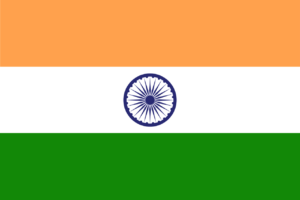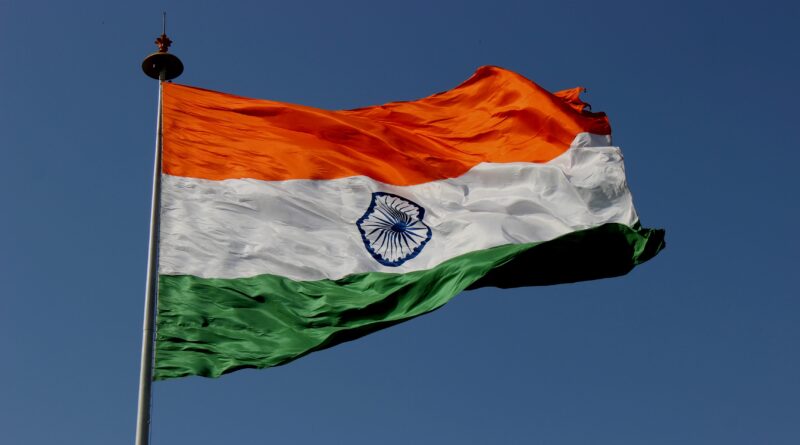“Har ghar tiranga”, How to celebrate Independence Day?
Har ghar tiranga :
The Hindi proverb “Har ghar tiranga” means “Flag in every home.” This phrase serves as a call to arms for every home to proudly fly the tricolor—India’s national flag—as a show of togetherness and patriotism.
The idea of “Har ghar mein tiranga” highlights the significance of developing a sense of pride and unity in one’s country by flying or displaying the Indian flag in every residence. The idea that each person’s participation to this collective display of the flag improves the connection between citizens and their country is reflected in it.
“Har ghar mein tiranga” encourages every home to fly the tricolor in an effort to foster a sense of community and raise awareness of the sacrifices made by those who fought for India’s independence. It promotes a sense of duty and belonging among its citizens by acting as a visual depiction of the diversity, history, and advancement of the nation.
In the end, “Har ghar mein tiranga” captures the sentiment of love for one’s nation and the desire to defend its ideals. It inspires people to respect their country’s heritage, acknowledge its accomplishments, and work to ensure its future.
How India celebrate independence day :
India celebrates Independence Day on August 15. It commemorates the day in 1947 when India attained independence from British colonial control. This day is a federal holiday that is celebrated across the nation with fervor and pride. Here are some important details about India’s Independence Day:
Historical Significance: The British Parliament passed the Indian Independence Act, which went into force on August 15, 1947. With the passage of this law, British India was divided into two independent nations: Pakistan and India.
Flag-hoisting: The Prime Minister of India hoists the Indian tricolor at the Red Fort in New Delhi as one of the main Independence Day celebrations. After this ritual, a speech to the country is delivered.
Parades and Cultural festivals: To commemorate the day, numerous Indian cities and towns hold parades, cultural festivals, and programs. Flag-raising ceremonies, patriotic performances, and other events are frequently held by schools, colleges, and organizations.
Patriotic Songs: The national anthem (“Jana Gana Mana”) and other patriotic songs are sung to foster a sense of pride and unification among the country’s citizens.
Flying Kites: Flying kites is a well-known Independence Day custom, particularly in the states of Gujarat and Rajasthan. As individuals participate in friendly kite-flying competitions, the sky is filled with vibrant kites.
Decorations: To mark the occasion, many public and private buildings are decorated in the saffron, white, and green colors of the Indian flag.
Cultural Diversity: During Independence Day festivities, performances that represent many areas and customs of the nation highlight India’s cultural diversity.
Tri-Services Guard of Honor: The Indian Armed Forces put on a great tri-services guard of honor and salute to the flag to display their power and discipline.
Prime Minister’s Address: The Prime Minister of India addresses the country on this day, discussing the nation’s development and accomplishments as well as detailing the nation’s next objectives and difficulties.
Fireworks: Throughout the evening, fireworks displays illuminate the sky, enhancing the joyful mood.
India celebrates Independence Day as a time for cohesion, pride, and contemplation on the sacrifices made by those who fought for India’s independence. It’s a day to celebrate the nation’s lengthy history and to look ahead to its continued growth and development.
Indian National flag :

The Indian flag is a representation of the nation’s identity, unification, and freedom. It is sometimes referred to as the national flag of India or the “Tiranga” (meaning “tricolor” in Hindi). It is a rectangular flag with three horizontal saffron, white, and green stripes. In the middle of the white stripe is a blue Ashoka Chakra (wheel) with 24 spokes.
Here is a quick explanation of the design and meaning of the Indian flag:
Top Stripe: The top stripe is colored saffron (kesari). It stands for the people’s bravery, selflessness, and sacrifice in their fight for justice and equality.
White Stripe: The center stripe is made of white and represents truth, purity, and peace. In the nation’s acts and policies, it displays the values of honesty and integrity.
Green Stripe: The bottom stripe is green and represents harmony, growth, and fertility. It serves as a reminder of the nation’s agricultural legacy and the value of preserving the natural world.
Ashoka Chakra: The “Dharma Chakra” (wheel of law) associated with Emperor Ashoka is symbolized by the blue Ashoka Chakra with 24 spokes in the middle of the white stripe. It represents justice, development, and movement.


Pingback: Asia cup 2023 Cricket, એશિયા કપ ક્રિકેટ ટુર્નામેન્ટ 2023, સંપૂર્ણ કાર્યક્રમ અને ક્રિકેટ ટીમ ની જાહેરાત - Vipra Speaks